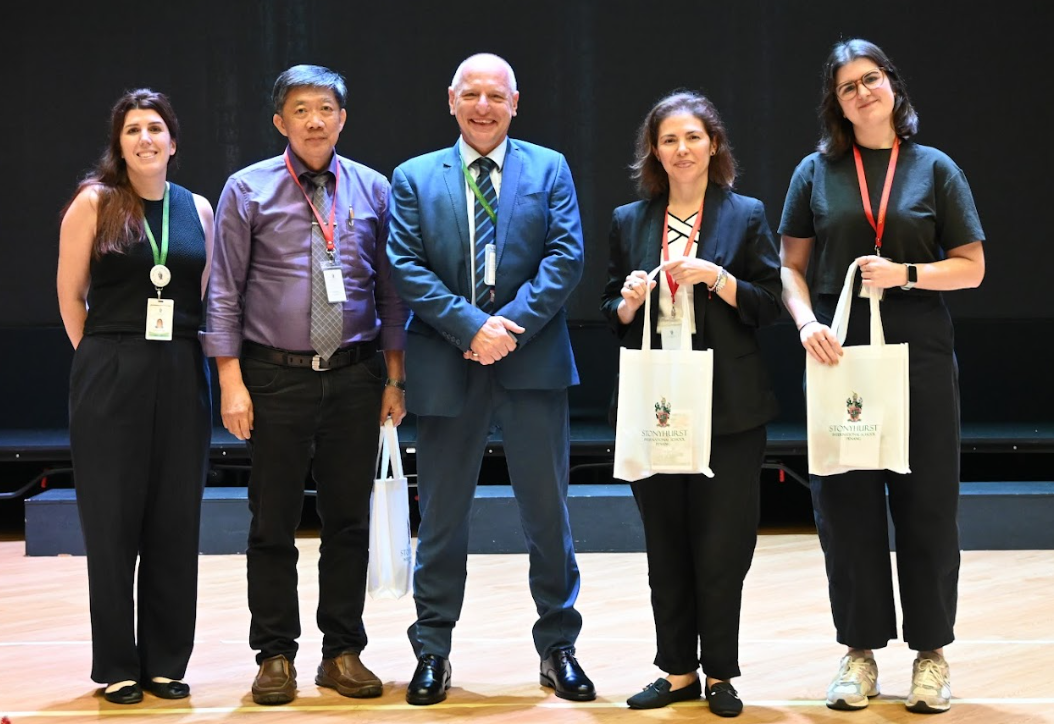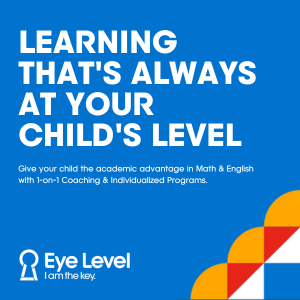Bringing up children is no mean feat. And as parents with the best interest of our child at heart, we are always second-guessing ourselves as to what we are doing as parents are enough. Parenting does not come with a manual and as we teach our children, we too continue to learn the rules of good parenting. The world around us is changing rapidly which doesn't help matters since most of what worked for us as children does not work any more.
One of the crucial life skills we can help our children to develop is to become effective thinkers and lifelong learners. The way our children think and learn can make a world of difference to how they spend their life and how successful they become in the future.
So, here are 10 ways to help our children become thinkers and lifelong learners.
1. Teach them to predict and justify
Being able to anticipate the future from present events and situations is a crucial skill and you can build it in your child with this simple exercise.
Every time you are reading a story or watching a movie together, stop in the middle and ask your child to predict what happens next based on what they have read or seen so far. Ask them to justify their answer by supporting evidence from the story or the movie and discuss your point of view too.
Once you get to the end of the story or the movie and find out what happened, discuss your ideas and compare them against what really happened. This way your children will learn to hone their critical thinking skills, evidence-based thinking, and predicting outcomes based on strong, solid proofs.
2. Don’t rescue - let them do their own thinking
This point cannot be emphasised enough. While as parents it might break your heart to see your child falter, struggle, and encounter difficulties, don't rush to rescue them. Let them find ways to combat the problem and find solutions. You can guide them if they request help. But don’t hand them the solution. For instance, instead of telling them the answer, let them do the thinking, you can help them by asking the right questions that can help them get to the answer. A few examples of questions you can ask are:
-
-
"What do you think this question means?"
-
"What can you do to get to the answer?"
-
"How do you intend to proceed?"
-
Let them answer these questions to figure out the solutions to the problem they are facing.
3. Help them develop a growth mindset
Believing that ability and intelligence advance over time, rather than children being born with them, is the first step towards ensuring that your child develops a growth mindset.
Help your children focus on the learning, their efforts, and the journey towards reaching a solution, instead of just the result. One way to achieve this is through mindful praising of their achievements. Instead of using phrases like “You are so smart” or “How clever of you”, use phrases such as the following:
-
-
“What an interesting theory you have! I never thought of it this way.”
-
“That was an excellent plan you came up with to complete the work.”
-
“The research you have put into doing this homework is really admirable.”
-
“I can really see how much your writing has improved.”
-
“I applaud your hard work in really going deep into the subject instead of superficially skimming through it.”
-
“That is a really good perspective to look at.”
-
4. Listen intently and understand
As parents, we sometimes try to find a solution for a problem and advise our children on the best course of action instead of trying to see a problem from the perspective of our children and guiding them towards fixing it themselves. Hence, we have to learn first to listen carefully with the intent of understanding instead of just replying or giving advice.
So, next time your children come to you to talk about something, look them in the eye and listen intently, understand what they are saying, and provide them with the support they need to think for themselves. You can do this by discussing what they are talking about, such as:
-
-
“So, you know what you want to do but are confused about how to go about doing it?”
-
“Let me check if I understand correctly what you are saying. You are excited about this opportunity but are scared of failing, is it?”
-
“I understand that you are trying to find a way out of this problem, am I right?”
-
5. Catch a thought, pass a thought
The aim of this step is to ‘catch’ what your child is thinking and ‘pass’ on a thought that helps them move forward with their thinking..
During the ’catch’ phase, follow step four to listen intently to your child and understand what they are saying. Check and confirm if you understand them right by saying things like –
-
-
“Can you explain in a different way what you are trying to say?” Or maybe
-
“You’re saying that…”
-
Once you have ‘caught’ the thought of your child correctly, you move on to the ‘pass’ phase, whereby you can ask questions as given below to help them move ahead in their process of thinking.
-
-
“What makes you say that?” to help them justify their thought
-
“Can you help me understand your thoughts a little bit more?” to get them to delve deeper into their thoughts
-
“How does this relate to what you already think?” to assist them to connect with what they already know
-
“Is there another angle to this?” to make them view the thought from different perspectives.
-
6. Set yourself up as an example
Children learn more through actions and examples than by words. So, make sure you set yourself up as a thinker and a lifelong learner as an example for your child. Use mindful words and phrases that communicate a passion for learning, wonder for knowledge, and reflect growth in thinking. Integrate phrases such as the ones given below into your regular conversations with your child to see them bloom into passionate thinkers and lifelong learners like yourself –
-
-
“That’s an amazing perspective! I never thought of it that way.”
-
“I must find out more about this.”
-
“It’s such an intriguing thought. Please can you tell me more about it?”
-
7. Focus on the learning instead of the work
As parents, we often get carried away with things like grades, marks, and the end result, so much so that we forget the most important thing – learning. Remember that the point of every assignment and homework and everything in between is the learning and not the completion of the work. It would need conscious effort but make sure you as well as your child focus on the journey instead of the destination. So, when there is an assignment your child has to do, teach them to ask what is the purpose of the assignment and help them focus on the method of completing the assignment and learning through the process. In simple terms, monitor the learning and not the work.
How to go about doing this? Instead of asking, “When is this homework due?” maybe ask the following:
-
-
“What are you learning about at the moment?”
-
“How are you going about doing the assignment?”
-
“What are you learning by completing this homework?”
-
8. Teach them to ask questions in the right way
Some of us were taught to accept things without arguing because 'that is what good children do'. But it is not the way an individual becomes a thinker and a lifelong learner. Encourage your children to ask questions, voice their opinions, and debate their points of view, but in a respectful manner.
You can teach your children to become vocal speakers by having regular and open discussions with them. Allow them to speak their minds, talk about their perspectives, and argue their points. Show them how differences of opinion can be discussed peacefully and respectfully by using the following questions:
-
-
“Why do you think about this in that way?”
-
“Do you have any evidence to support your claims?”
-
"Are you open to considering a different point of view than this?"
-
“Why do you disagree/ agree with this point?”
-
“How did you arrive at this conclusion?”
-
9. Encourage them to analyse
Our environment and surroundings can teach us a lot only if we take time to stop, look, and analyse. Hence, make sure you teach your children to do that. Help them to question the purpose of something, it can be a small thing like the design of a chair – why is it built in that way? Could there be a better design? – or it can be big things like the constitution – what does it say? How does it help our society function properly?
Whenever you can, explore your surroundings with your child, and ask questions like –
-
-
“What do you think of this?”
-
“What purpose do you think this serves?”
-
“Do you think it serves its purpose well or is there a better alternative?”
-
“What is the one thing you most like about this?”
-
10. Allow them time to pursue their interests
Don’t force your little Leonardo da Vinci to focus on mathematics when he wants to paint and don’t push a Marie Curie to learn ballet when she would rather spend time researching and experimenting. The point is you never know how and when the passion of a child might turn into their life-calling.
Let children be and allow them to enjoy their childhood. Encourage them to pursue different hobbies, allow them to ask questions, and let them play, learn, and grow according to their own timeline. Don’t push for perfection or academic excellence, instead help them enjoy the journey of slowly discovering themselves and reaching their fullest potential.
These ideas have been adapted from work by Dr Ron Ritchhart from Project Zero at the Harvard Graduate School of Education.
Australian International School, Malaysia (AISM) - building thinkers and lifelong learners
It is not just the responsibility of parents to help children become thinkers and lifelong learners. After all, school is the place children spend most of their growing years in. AISM understands the importance of the school’s role in encouraging continuous learning, thinking, and growth, and hence fuels curiosity in children through proper education.
AISM doesn’t believe in education just for the sake of building a career. The school is dedicated to creating individuals who are empathetic, innovators, leaders, and responsible global citizens. AISM achieves this through their unique teaching methodology – Visible Learning, which is research-based, and helps build critical thinking in students by making them responsible for their own learning.

If you want to know more about how AISM helps its students become thinkers and lifelong learners, do consider participating in the upcoming Open Week from 13-17 March 2023. Register now for exciting promotions and exclusive activities. You can also visit the official school website to find out more.













![[elc International School] NO SHORTCUTS: WHY THINKING STILL MATTERS](https://mint-edm.sgp1.digitaloceanspaces.com/production/XTvbqZxxQQxUHjyDcClxCortA5SxNs.png)




















